“One of the worst things that can happen to a person is to know his own destiny.” - Snoopy
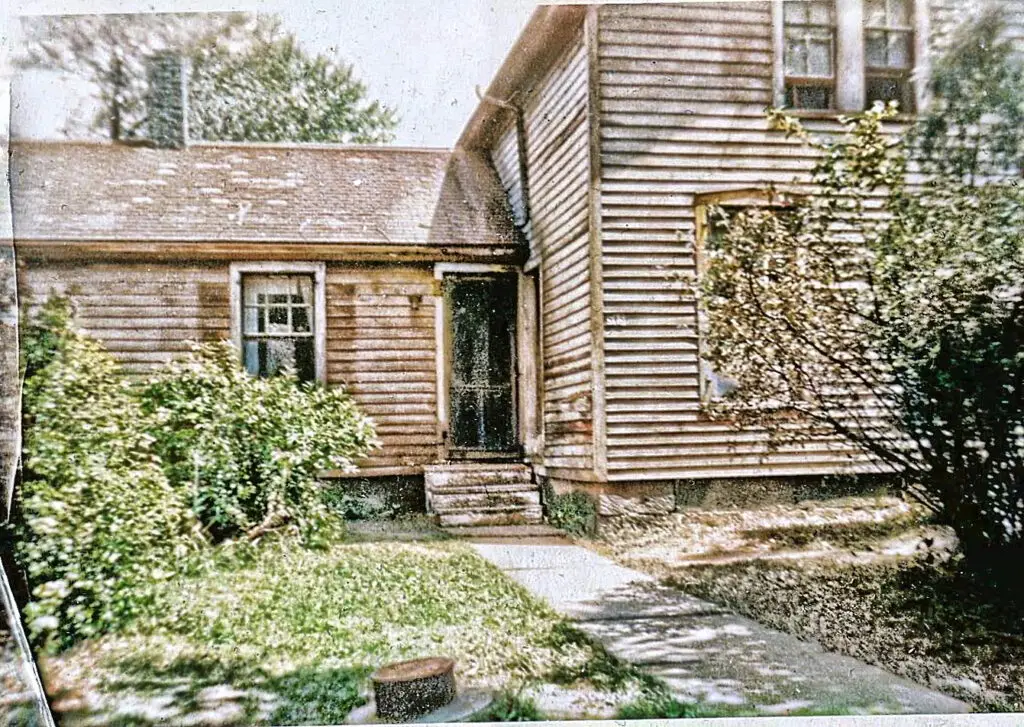
SHOPTALK: This is odd, but somewhat fortuitous (for me anyway) because the May 17, 1915, issue of the News apparently was lost. Ergo there is no micro file of it.
I honestly could not have timed it better. Because I am concerned about my vision. As I have repeated ad nauseum over the last several months, my eyesight is just terrible. And it’s not improving.
Most of the problem (and I really hate to admit it) is age. I have never felt so vulnerable and incapable in my life. Though I can see good enough to drive (at least for now).
For a majority of my years, I have been nearsighted. But a few years following a diagnosis of macular degenerative disease I suddenly began to be more farsighted. (Go figure. I suppose there’s some rational explanation for the change. But it really doesn’t need explaining, because it just is.)
I am a reader. I read maybe two or three novels a month. And I have done so for a long, long time. There was a time when I didn’t really need my glasses to read. But no more.
In the past when I watched television, I needed my glasses to see. But, again, no more. I can see just as well (or better) without them.
When I work on the computer, I do not wear glasses. I can and do quite often, of course, adjust the size of things. For several years now I’ve been using a glasses strap because I have to take them off and put them back on all the time – depending on what I’m doing. That has been helpful. But the process can be annoying.
So, the crux of the matter is that there is no Briefs Section for May 17, 1915. And I don’t know if I can continue with any comprehensive “stuff” in the future.
But as a consolation of sorts, this week I am going to publish some of the items I didn’t get to last week from Vermilion in 1882.
I KNOW you’ll enjoy them. (They’re important.)

WE'RE STILL HAPPILY COLLECTING STORIES
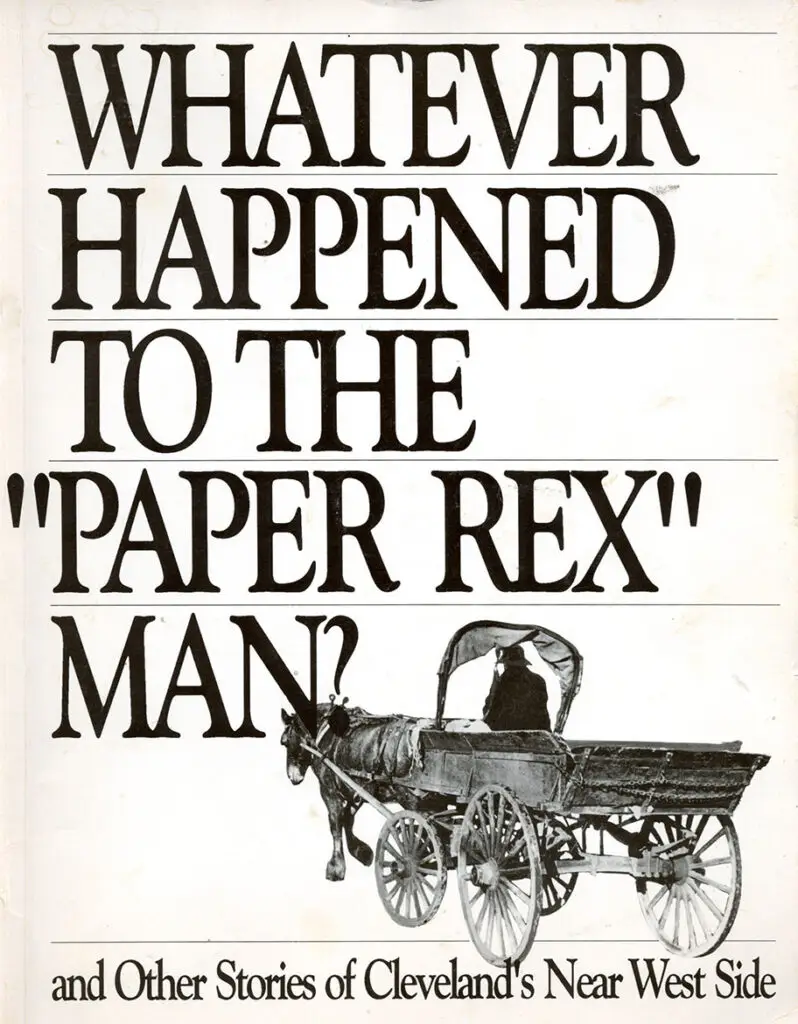
TELL ME A STORY: Last year I came across a book called “Whatever Happened to the ‘Paper Rex’ Man? and other stories of Cleveland’s Near West Side”. It is a collection of vignettes (stories) written by various persons who live or lived on the West Side of Cleveland during the 20th century. It was published in 1993 and went through at least 2 printings.
But one thing for sure. People did and do remember those days.
Anyway I believe it would be a nice idea for the Vermilion History Museum to put together a similar tome – one that featured stories from our community.
In literary terms, a vignette is a short, descriptive passage that captures a moment in time. It can enhance a mood, develop a character, or describe a setting.
In the last few weeks I have received more great stories from Vermilion expats. (Thanks.)
They’ll be added to the wonderful stories I acquired last year – But I need more. It doesn’t have to be a novel. 500 to 1000 words would be great. And do not worry about spelling or grammar, etc. The stories would be edited. (Even I – who writes “stuff” every day – make mistakes.)
Just take one little thing about your life in Vermilion during the 20th century and write about it. Then give or send it to me with your name.
I would like, maybe, 50 stories (1 or 2 from each person). And when all is said and done I’ll publish those stories in a nice book. Any and all funds realized from any publication will be used to support the Vermilion History Museum (a 501c3 nonprofit organization).
Please don’t be shy. I really, really would like to hear your stories.
As an old Pepsi Cola truck driver once wisely told me, “I know what I know. You know what you know. But I won’t know what you know unless you tell me.”
Feel free to call me @440-967-4555 or email me @ rnt@twc.com – or just
stop at the museum.🐈⬛

YOU'RE (ALWAYS) INVITED
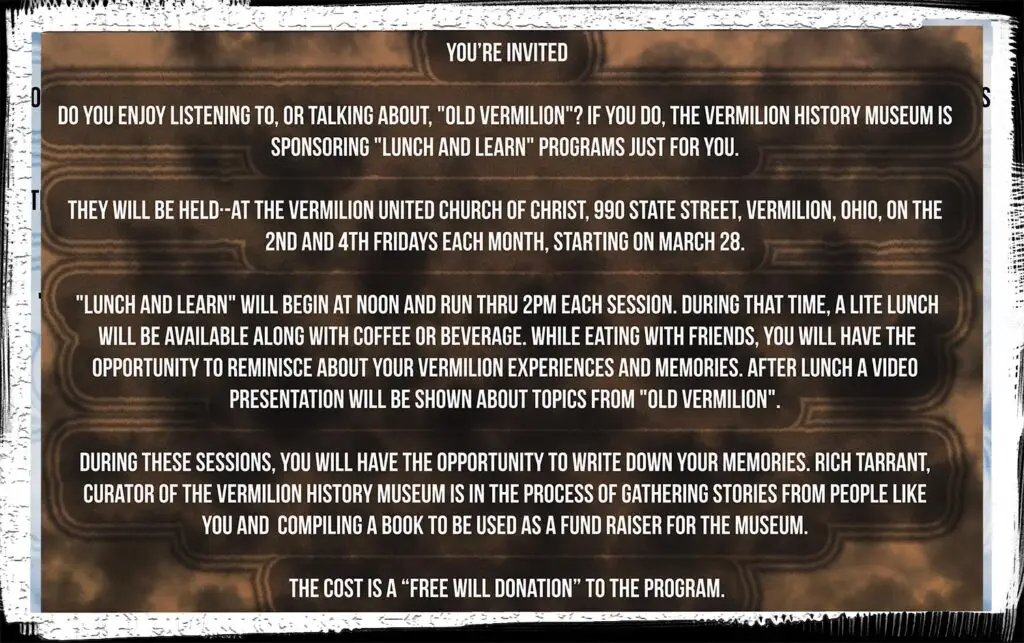
This is A VERY SPECIAL NOTE
NEW: I’ve added a “special section” to the “Past 20 Years” part of the page. You will find there nearly (but not all) every video and audio production I’ve published over the last few years. They’re not arranged as nicely as I want them to be. But they’re all there – and I’ll add to them as time passes.
![]()
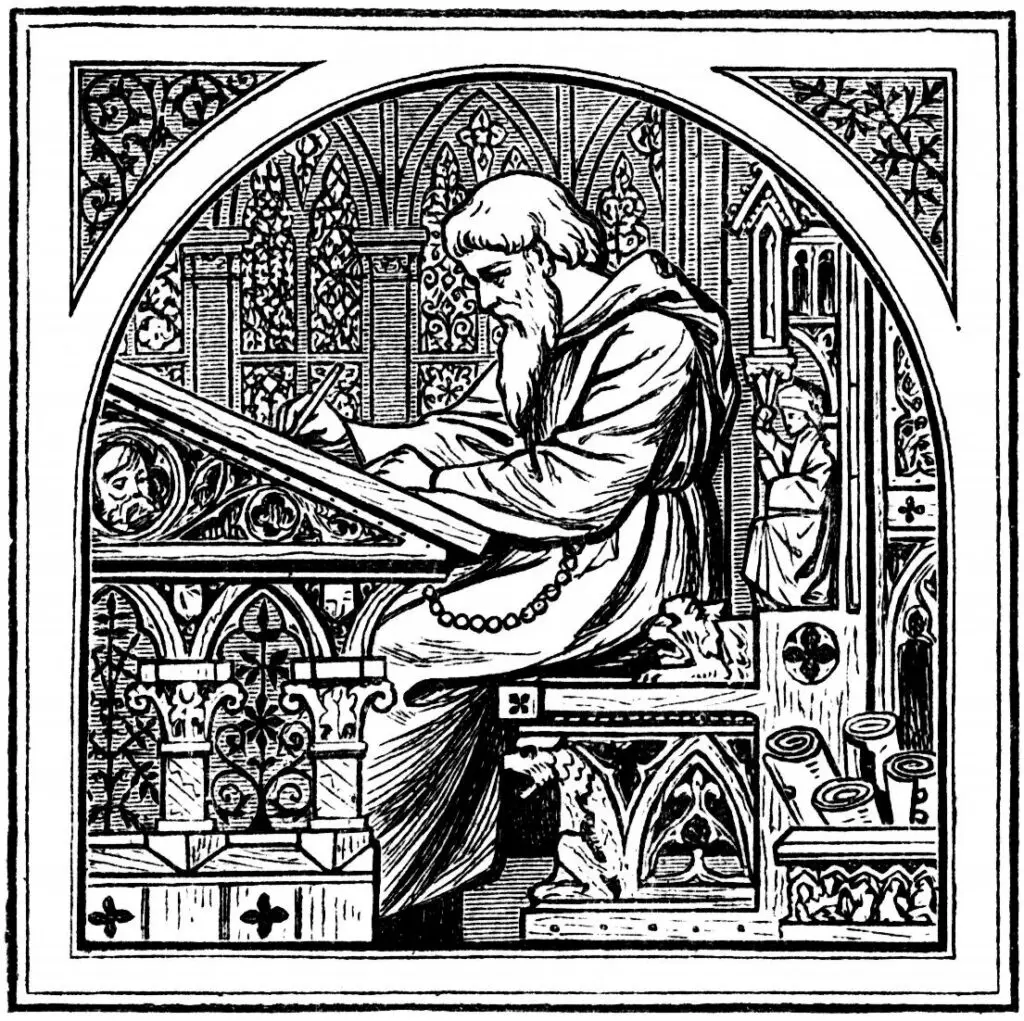
A VERY RICH COMMENTARY

I Have Seen the Future
I am a collector of “saws”. Some might call them proverbs or sayings. To date I have amassed 348 pages of them and counting. They come from various sources – esteemed poets like Wm. Shakespeare, John Keats and W.B. Yeats; some from famous and some not-so-famous novelists, playwrights, lawyers, philosophers, doctors, drunks, junkies, truckdrivers, musicians and (believe it or not) cartoon characters (i.e. Crankshaft, Lucy VanPelt, Charlie Brown, B.C., as well as Andy Capp). They’re just simple thoughts that grab my attention. Thoughts that are poignant, blatantly true or just downright funny. But don’t laugh too hard at my hobby. Some people collect plastic ducks and even sand and dust.
The reason this comes to mind is because every once in a while I develop one of my own. That which immediately comes to mind is a sort of hybrid idea that I fashioned from a similar thought that I recently came across while reading a novel. It is this: “History largely consists of telling folks that ‘Joe died’ to those who never knew that Joe was ever alive.”
I view this as a fairly reasonable description of what I do on a consistent basis. The problem is that it often tends to be both a frustrating as well as a very melancholy definition.


A Few More Pages
Part of the "Black Cat" Series

Ellen Roscoe talks about her husband's family.. . (Harriet


THEY NEEDED / TO BE. (157) rainy days / in spring / are my (kind’a) / days. / taking me back / to / sweaty / black rubber raincoats / buckle arctics / & / lights / in windows @ / 10 a.m. / in may. / my village / live / with the crackling / sound of water / neath / auto tires / all / going to / & arriving at / the somewhere(s) / they needed / to be. -May 14, 2025
VERMILION HISTORY THEATRE: Due to all the distractions surrounding me lately I neglected to keep the link to the History Audio/ Video Theatre. So – click on the name above and visit.
SOMETHING OLD - THAT'S NEW
A BLACK CAT VIDEO – “CAPTAIN BILL” AND THE V-25
Remember Me Always…
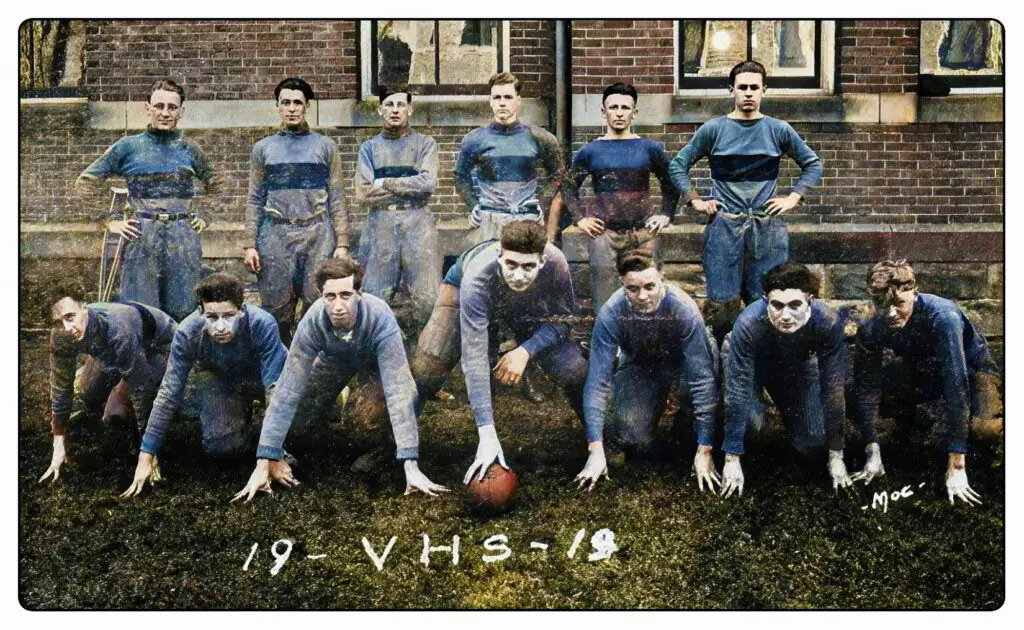
I know not the paths this book of memories traveled before it came back to Vermilion, but I’m so glad that it did. The keeper of these memories was a lady named Loie Belle Ward Morris. She was born in Pittsfield Township, Ohio on 25 May 1900 and passed into the hands of God in Elyria, Ohio on 23 August 1991.
I wish I knew more about Loie. But for now the scrapbook she put together back in 1920 as she prepared to graduate from Vermilion’s State Street School will have to suffice. Her brother, Wilbur, gave her the beautiful red velvet covered book on May 20, 1920. It was probably a graduation gift. Given all the items inside it appears to have been something she really wanted; and much more – something she cherished.
Inside are several mementos from what she called the 1920 “Junior / Senior Reception” (today we’d call it a Prom) as well as some dried wild flowers she’d gathered while canoeing with friends along the Vermilion River; a ticket from the 1920 Senior Class play in Oberlin, Ohio; and another from the 1920 dance season at Crystal Beach Park. There are also some tresses of auburn hair from a person who was apparently her favorite teacher (Isabel Hutt) who, by the way, was also the school Principal; a neatly drawn sketch of her graduation dress as well as snippets of material and ribbon from the dress; and a pressed rose corsage and ribbon she wore for commencement.
All these items are wonderful, as well as informative. But one of the nicest things about the book are the photographs. While they are not of and by themselves rare or unusual (i.e. they were cut out of the 1920 annual and pasted in the book) Loie did all of us a great big favor; she gave names to the faces in them.
The accompanying photograph of the Vermilion High School football team of 1 919 (for instance) is from the Vermilion School “Hi-Times” annual book of 1920. It’s a good photograph taken by Vermilion photographer Rudy Moc. While the player’s names appear in the annual they are not listed in any order that would correspond with the picture. This glitch is not unusual. Given the reality that Vermilion was a very small town of perhaps only 1200 to 1400 total souls back then – everyone knew all the faces without asking. A caption identifying the boys was, therefore, deemed unnecessary. But Loie, thank heaven, possessed the foresight to understand that that would not always be the case. So, beneath her photo in the scrapbook she wrote their names:
Back Row – L-R: Ralph Law; Fred Nicholas; Marcus Harris; Louis Moyer; Royal Knott; Moses Ranney.
Bottom Row – L-R: Kenneth Kishman; Chester Wittmer; Sterling Smith; Percy Cullen; Ervin Maurer; Percy Holl; Robert Trinter.
You may note that a pair of crutches leans against the building behind the team. Those crutches belonged to Kenneth Kishman who broke his leg in the last (and title) game with the Huron team. Vermilion won that game (14-7) making them the Erie County Football Champs of 1919.
There are numerous other items in Loie’s book of memories of local interest – names and inscriptions. Not all are from 1920. One is from April 9, 1922. It reads, “To the dearest girl I ever knew.” It is signed, George Morris, Jr. She must’ve been very dear because she would later marry him. But the last inscription is probably the best. A young neighbor and friend named Marian M. Kishman wrote: “Remember me always / Remember me ever / Remember the fun we had together.” Yes.
Ref: Special thanks to: Jim Wall; Vermilion High School Hi-Times, 1920; and especially to Loie for the memories.
© RNT May 11, 2025

the history of erie county in ohio (Continued)
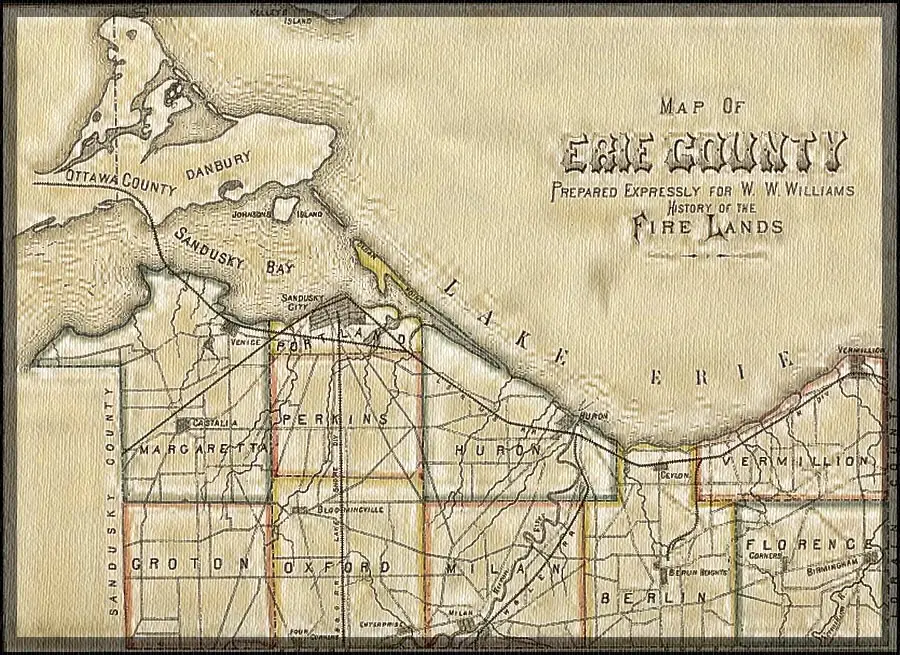
CHAPTER XXIX.
HISTORY OF VERMILLION TOWNSHIP.
TOWNSHIP number six, range twenty. Of the nine townships that form Erie county, this is the most northeasterly and has the largest amount of land bordering on Lake Erie. It was named from the river that passes to its outlet in the lake through the township.
Vermillion township is bounded on the north by Lake Erie, on the east by Brownhelm township, Loraine county, south by Berlin and Florence, and west by Berlin. The natural appearances are distinctly outlined, the northern portion being level, and the southern alternating in ridges and lowlands. There are but few marshes, and these have been reclaimed and cultivated. The soil is variable, having in different localities different qualities—gravel, clay, sandy, and marl. Iron ore has been found in paying quantities, and numerous stone quarries abound.
Streams are not large, and but three in number. The largest is the Vermillion, rising in Ashland County, running north through Huron and Loraine counties, and emptying into Lake Erie, near the eastern boundary of the township. The Indians gave it a name suggested by the paint they found on its banks, and the smallest stream of the three, known as Sugar Creek, received its name from the same source, because at its mouth was a mound resembling a sugarloaf, as well as the fact that the Indians made sugar from the sugar orchards along the stream. The other stream, La Chapelle, rises in Huron county, and passes through Florence, Wakeman, and Vermillion. Natural trees that formerly abounded, but are now nearly gone, were mostly different varieties of oak, whitewood, black walnut, maple and hickory.
Wild animals, until within a few years, were found here in great abundance. Wolves, deer, wild-cats and bears were all at home here, and the wolves became very troublesome to the early settlers by continual depredations on their sheep and swine.
Ancient mounds and fortifications have been discovered that prove this at some time in the distant past to have been a great centre of Indian forces. Two of these fortifications are on the banks of the Vermillion, in the south part of the township, on the farm owned by John Summers, while in different parts of the township are other and smaller ones. Who built them is not known. History gives us no knowledge on this subject, but we do know that the Indians found here by the first white settlers were principally those that belonged to the Sandusky, Tawa, and Chippewa tribes.
The first settlement of Vermillion found a wide sand beach extending from the mouth of the river west the whole length of the township, from four to,,,
HISTORY OF ERIE COUNTY OHIO – With Illustrations and Biographical Sketches of Some of Its Prominent Men and Pioneers – Edited by Lewis Cass Aldrich – Syracuse N.Y. – D. Mason & Co., Publishers – 1889

